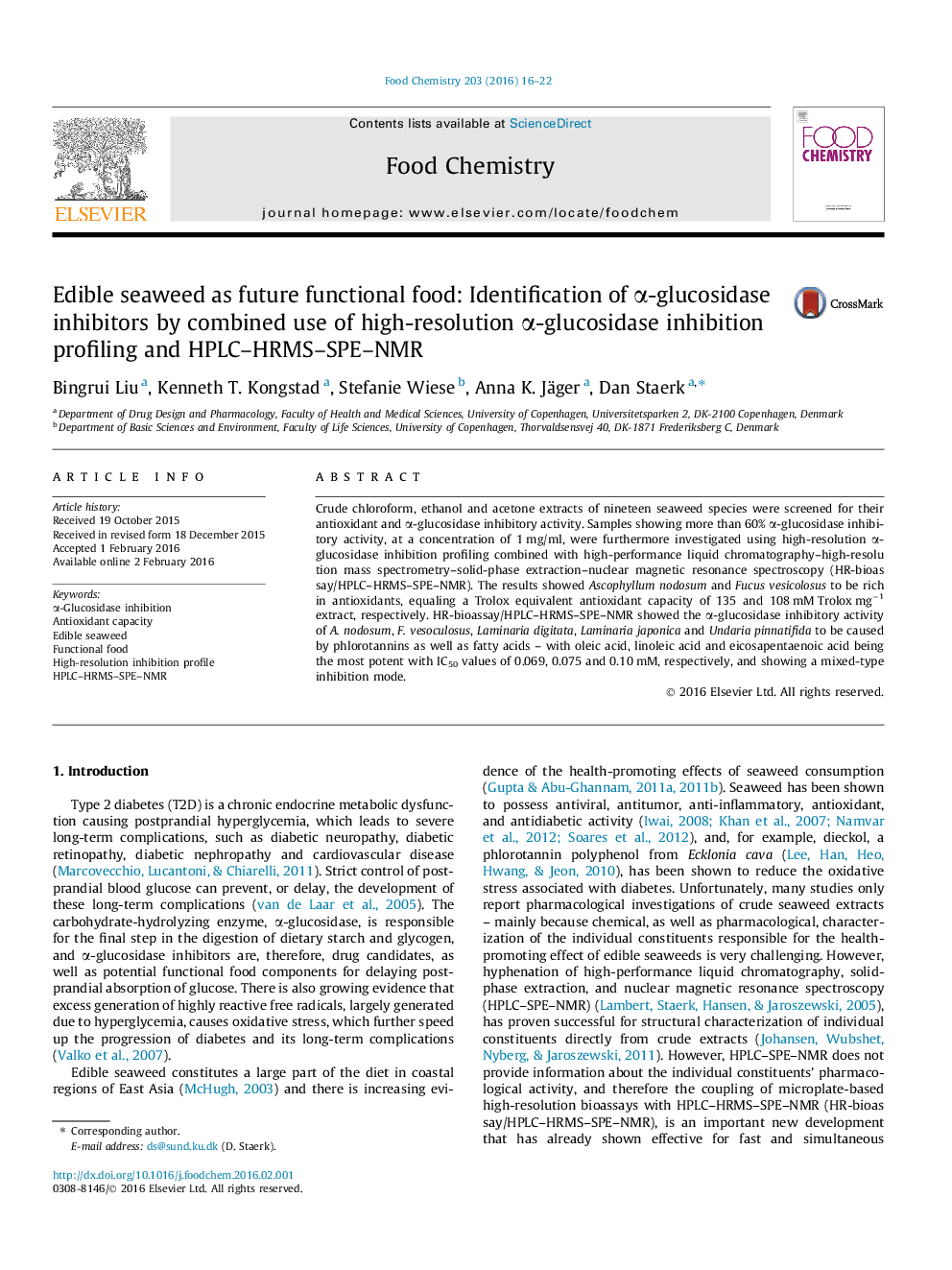| Article ID | Journal | Published Year | Pages | File Type |
|---|---|---|---|---|
| 7588823 | Food Chemistry | 2016 | 7 Pages |
Abstract
Crude chloroform, ethanol and acetone extracts of nineteen seaweed species were screened for their antioxidant and α-glucosidase inhibitory activity. Samples showing more than 60% α-glucosidase inhibitory activity, at a concentration of 1 mg/ml, were furthermore investigated using high-resolution α-glucosidase inhibition profiling combined with high-performance liquid chromatography-high-resolution mass spectrometry-solid-phase extraction-nuclear magnetic resonance spectroscopy (HR-bioassay/HPLC-HRMS-SPE-NMR). The results showed Ascophyllum nodosum and Fucus vesicolosus to be rich in antioxidants, equaling a Trolox equivalent antioxidant capacity of 135 and 108 mM Trolox mgâ1 extract, respectively. HR-bioassay/HPLC-HRMS-SPE-NMR showed the α-glucosidase inhibitory activity of A. nodosum, F. vesoculosus, Laminaria digitata, Laminaria japonica and Undaria pinnatifida to be caused by phlorotannins as well as fatty acids - with oleic acid, linoleic acid and eicosapentaenoic acid being the most potent with IC50 values of 0.069, 0.075 and 0.10 mM, respectively, and showing a mixed-type inhibition mode.
Related Topics
Physical Sciences and Engineering
Chemistry
Analytical Chemistry
Authors
Bingrui Liu, Kenneth T. Kongstad, Stefanie Wiese, Anna K. Jäger, Dan Staerk,
